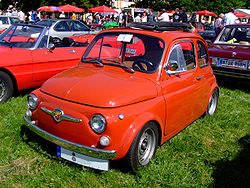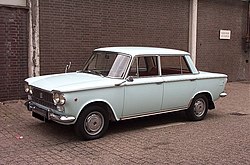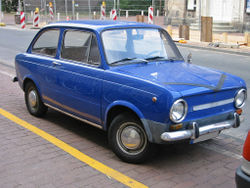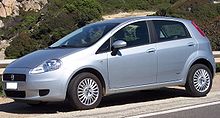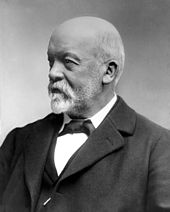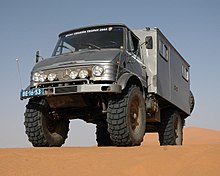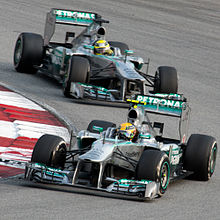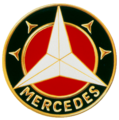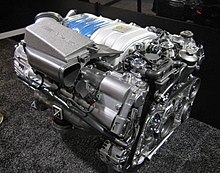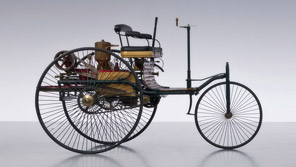Antigos invadem a Serra, XXXII Exposição de Veículos Antigos de Teresópolis. dia 28 de setembro.
How it all Began 1834: Gottlieb Daimler.
'It’s not the idea, it’s the implementation that counts.'
Gottlieb Daimler is born on 17 March 1834 in Schorndorf. After training
as a gunsmith and working in France, he attends the Polytechnic School
in Stuttgart from 1857 to 1859. After completing various technical
activities in France and England, he starts work as a draftsman in
Geislingen in 1862. At the end of 1863, he is appointed workshop
inspector in a machine tool factory in Reutlingen, where he meets
Wilhelm Maybach in 1865. In 1872, he becomes Technical Director of the
gas engine manufacturer Deutz Gasmotorenfabrik, where he becomes
familiar with Otto’s four-stroke technology. After differences with the
Managing Director, he leaves the company in 1882. Daimler sets up a
development workshop in his greenhouse at his Cannstatt villa to
concentrate on developing petrol-driven four-stroke engines. Working
with Wilhelm Maybach in 1884, he develops an internal combustion engine
known today as the 'Grandfather Clock'. With its compact, low-weight
design, the machine forms the basis for installation in a vehicle. The
costs of trial operations soon consume Daimler’s entire fortune,
however, so he is obliged to find business partners. He founds
'Daimler-Motoren-Gesellschaft' on 28 November 1890 together with Max
Duttenhofer and his business partner Wilhelm Lorenz. But while
Duttenhofer wants to produce stationary engines, Daimler prefers to
focus on vehicle production, and a dispute ensues.
After
Wilhelm Maybach resigns in 1891 due to unacceptable terms of contract,
Daimler resorts to a ruse. He continues to build engines with Maybach,
but the patents are all in his name. The increasingly tense relationship
with Duttenhofer and Lorenz lead them to exclude Daimler as a
shareholder. A deterioration in finances leads to stagnating technical
development, which prompts DMG to attempt to reinstate Maybach in 1895.
He refuses, pointing out that he would not come back without Daimler. In
the end, commercial pressures result in both of them returning to the
company. Thanks to the Phoenix engine built by Maybach, the Daimler
engine gains popularity abroad. A group of English industrialists are
prepared to pay 350,000 Marks for licensing rights. Maybach is appointed
Technical Director of DMG, and Gottlieb Daimler receives a position on
the Technical Board and becomes the Inspector General of the Supervisory
Board. The return of both men to DMG is an unexpected boost for the
company. Gottlieb Daimler enjoys this rapid development for only a short
period of time. He dies of heart disease on 6 March 1900.

How it all Began 1844: Carl Benz.
'Love of invention will never die'
Carl Benz is born in Karlsruhe on 25
November 1844. His father dies in July 1846. Despite living on limited
financial means, his mother ensures that her son attends a grammar
school and later studies mechanical engineering. The young engineer
advances quickly from a locksmith to a designer and workshop foreman. In
1871, Carl Benz joins forces with 'mechanician' August Ritter to found
his first company, 'Carl Benz and August Ritter, Engineering Workshop',
in Mannheim. When Ritter emerges as an unreliable partner, Carl Benz is
forced to pay him off using the dowry of his wife, Bertha Ringer, and
runs the company alone. From 1878, Carl Benz works intensively on a
gas-driven two-stroke engine to realise his vision of a 'vehicle without
horses'. After long and laborious attempts, he gets the engine running
for the first time on New Year’s Eve in 1879. He founds the
'Gasmotorenfabrik Mannheim' (Mannheim Gas Engine Factory) as a
shareholding company in October 1882. Benz’s share in the company
amounts to a mere 5 per cent, however, and he has only limited influence
in technical areas. His backers are primarily concerned with the safe
business of stationary gas engines.
Benz
leaves the company in January 1883 and joins forces with new business
partners Max Rose and Friedrich Wilhelm Esslinger. They found the
company 'Benz & Cie. Rheinische Gasmotoren-Fabrik Mannheim' (Benz
& Co. Rhine Gas Engine Factory Mannheim' and launch the two-stroke
'System Benz' engine. While Benz strives to implement his automotive
vision, his business partners Rose and Esslinger are sceptical of the
outcome. Carl Benz is once again faced with finding new investors.
Julius Ganss and Friedrich von Fischer replace Rose and Esslinger in May
1890. The combined business model of producing stationary and vehicle
engines is a success. But Benz wanted to focus exclusively on vehicles
and starts the company 'Carl Benz Söhne' (Carl Benz & Sons) in
Ladenburg in 1906. In 1912, Carl Benz resigns as Managing Director and
transfers sole management control to his sons. He witnesses the rise of
motorisation and the implementation of his ideas. On his 80th birthday,
the 'once ridiculed and misunderstood inventor,' as he has been seen in
the past, enjoys plaudits from around the world. In his last years (1926
to 1929), Carl Benz remains active as a Board Member of the new
Daimler-Benz AG company. The automobile pioneer dies at his home in
Ladenburg on 4 April 1929.

How it all Began 1846: Wilhelm Maybach.
The king of designers
Wilhelm Maybach is born in Heilbronn on 9
February 1846 as the son of a master joiner. Orphaned at ten years old
following the death of both parents within three years of each another,
Wilhelm is adopted into the Reutlinger Bruderhaus in 1856 after friends
of the family print an announcement in the 'Stuttgarter Anzeiger'
newspaper. It is during his schooling at the Bruderhaus that Wilhelm
Maybach first becomes acquainted with Gottlieb Daimler whilst working in
the machine shop in 1864. Their close relationship will endure
throughout their lives. Wilhelm Maybach initially follows Daimler to
Karlsruhe and then in 1872 to the engine manufacturer Deutz. Following a
brief stint employed as a draughtsman, he is appointed head designer in
January 1873. When Gottlieb Daimler leaves the Deutz Gasmotorenfabrik
following internal wranglings, Wilhelm Maybach joins his friend in
Cannstatt in October 1882. Here they collaborate in the development of a
lightweight, high-speed combustion engine. Daimler-Motoren-Gesellschaft
(DMG) is founded in November 1890 by Daimler and two business partners,
Max Duttenhofer and Wilhelm Lorenz. Although Wilhelm Maybach was in
line to assume the position of head designer, he is unhappy with
contractual terms and leaves DMG in February 1891. What follows is a
remarkable temporary solution. Secretly funded by Daimler, Maybach
continues to improve his mobility concept.
Working
with a small team in the Hotel Hermann in Cannstatt, he develops
significant design concepts, including the belt drive, the Phoenix
engine and the spray nozzle carburettor – inspirations that are used in
the automobile industry for decades to come. Gottlieb Daimler and
Wilhelm Maybach are reinstated at DMG in November 1895 at the behest of
English industrialist Frederick Simms, who negotiates a substantial
licensing business with the company. Maybach’s primary objective is to
re-establish DMG’s competitive capacity through technical innovation and
reliable products. Extensive development work is implemented to advance
the concepts devised in the Hotel Hermann to series production status.
The most significant outcome is the belt-driven car, the first
automobile to be produced by DMG in considerable quantity. Following the
death of Max von Duttenhofer in August 1903, Maybach’s standing within
the company gradually deteriorates, leading to his eventual resignation
from DMG in April 1907. Embittered by his treatment, Maybach goes into
business with his sons constructing the now legendary vehicles bearing
his own name. Wilhelm Maybach dies in Cannstatt on 29 December 1929 at
the age of 83.
This is where the automobile pioneer is also buried – close to the grave of Gottlieb Daimler at the Uff-Kirchhof cemetery.

How it all Began 1882 Engine development.
Test workshop in Stuttgart-Cannstatt
After leaving the gas engine works following a dispute with management
in 1882, Gottlieb Daimler purchases a villa in Cannstatt
(Taubenheimstrasse). He immediately sets about upgrading the greenhouse
on the property by adding an extension to create his own testing
workshop. The refuge in the Taubenheimstrasse is an ideal retreat for
the close-knit partnership of Daimler and Maybach to continue their
research. Daimler’s vision was to focus on petrol as the fuel used in
engines being built into all conceivable types of vehicle – whether for
land, sea or air operation. The crucial technology that provides the
solution is discovered by Maybach after poring over extensive research
carried out by an Englishman named Watson in one of his patents. The
patent suggests the possibility of using an unregulated hot-tube
ignition system, an essential prerequisite for attaining higher speeds
without needing lighter, more powerful engines. The first design
developed in the Cannstatt testing workshop by the two engineers is an
“engine featuring unregulated hot-tube ignition system” based on the
four-stroke principle pioneered by Otto, and subsequently patented by
Daimler (DRP 28022).

By
the end of 1883, the first (still horizontal) high-speed test engine is
up and running. Delivering an engine speed of 600 rpm, this engine
easily surpasses the maximum speed limit of 120–180 rpm produced by
previous engines. Using this 'small model engine' as a basic concept,
Daimler and Maybach go on to develop the renowned Daimler
single-cylinder engine, referred to today as the 'Grandfather Clock',
which was a key milestone in the history of automotive production.

Lightweight and reasonably
priced, this two-seater car is considered the first mass-produced
automobile, with a production count of around 1200 units. In 1897, Benz
developed the 'contra' engine, the forerunner to today’s boxer engines.
This allows the company to satisfy the increasing demand for vehicles
featuring higher engine outputs. Between 1890 and 1899, the workforce
increases from 50 employees to 430. A total of 572 vehicles are produced
by Benz in the financial year 1899, rising to 603 in the following
year.
How it all Began 1883 Benz & Cie.
The first steps Benz & Co. Rheinische
Gasmotoren-Fabrik (renamed Benz & Cie. in 1899) is founded in
Mannheim by Carl Benz in October 1883 in collaboration with businessman
Max Kaspar Rose and sales representative Friedrich Wilhelm Esslinger.
Proving an immediate success, the company workforce increases rapidly to
25 employees. The newly established business even grants licenses for
building gas engines. Due to a growing demand for stationary engines,
Benz & Co. Rheinische Gasmotoren-Fabrik is compelled to relocate to
more spacious factory premises. While Carl Benz is working vigorously on
the development of a car engine, his business partners Rose and
Esslinger are becoming increasingly sceptical of the future prospects
for Benz’s brainchild. They are replaced in May 1890 by Julius Ganss and
Friedrich von Fischer. On his departure, Rose even leaves Benz with the
well-intended snippet of advice: “Don’t waste your time on motor cars.”
The appointment of the new partners sees Rheinischen Gasmotoren-Fabrik
Benz & Cie. evolve to become the second-largest engine manufacturer
in Germany, and the world’s leading producer of automobiles up to the
turn of the century. The economic breakthrough comes with the
four-wheeled motorised Velocipede – commonly known as the “Velo” – which
is produced between 1894 and 1901.

How it all Began 1884 The 'Grandfather Clock' engine.
The first contemporary automobile
Working together in the Cannstatt district of Stuttgart, Gottlieb
Daimler and Wilhelm Maybach are faced with a considerable challenge: To
develop a high-performance engine capable of driving a vehicle. Due to
their weight and size, the “drive machines” available at the time are
unsuitable for installation in a motor carriage. The two engineers would
have to develop miniature versions of existing designs to produce a
drive concept in line with Daimler’s plans. A light, compact design are
key factors in this process. On this basis, Daimler and Maybach build a
test engine with a vertical cylinder, which is christened the
“Grandfather Clock” due to its appearance. The output of the 1884 design
is around 1 hp (0.8 kW) with an engine speed of 600 rpm. The compact,
weight-saving construction makes it ideal for installation in vehicles.
It is subsequently used in the Daimler Reitwagen (“Riding Car”) and the
motor carriage. This design paves the way for Daimler and Maybach to
install an engine in a motor vehicle.
How it all Began 1885 The Daimler 'riding car'.
The world’s first motorcycle
Based on the Grandfather Clock template, Gottlieb Daimler and Wilhelm
Maybach build a smaller single-cylinder engine. The first test object is
a bicycle-inspired “carriage” with a strengthened wooden frame. It
becomes known as the “Daimler Reitwagen” (“Riding Car”). Installing the
engine vertically in the wooden frame, Gottlieb Daimler essentially
invents the motorcycle. On 28 August 1885, Daimler is awarded Patent
specification DRP 36423 for the “vehicle with gas or petroleum drive
machine”.


How it all began 1886 Benz Patent Motor Car.
The world’s first automobile
The financial success of his gas engine factory secures Benz an economic
basis, enabling him to devote himself to his vision of an engine-driven
vehicle. But since his two-stroke engine is too large and too heavy to
be installed in a vehicle, Benz puts all his efforts into the
four-stroke principle. Just like Gottlieb Daimler and Wilhelm Maybach,
he has to find a way to increase engine speed. And, just like the
Cannstatt engineers, he focuses on ignition and valve control. Although
his engine reaches a speed of “only” 400 rpm and is therefore less
efficient than Daimler’s design, it already provides the necessary power
to drive a “vehicle without horses”. Carl Benz demonstrates the full
extent of his talents in developing the vehicle. Instead of installing
his engine in an existing vehicle, he designs his motor car as an
integrated independent construction. The primary assembly is the engine
with a horizontal cylinder and large, horizontally mounted flywheel.
Benz designs his innovative vehicle with three wheels because he is
unhappy with the single-pivot steering used in carriages at the time.
Testing begins in October 1885. On 29 January 1886, he takes a step of
historical significance when he submits a patent application for his
“vehicle with gas engine operation” to the Imperial Patent Office. The
patent specification for DRP 37435 is recognised today as the “birth
certificate” of the automobile and bears the name “Patent-Motorwagen”
(“Patent Motor Car”) for the world’s first automobile.
How it all began 1888: Bertha Benz.
The maiden long-distance journey
Bertha and Carl Benz marry on 20 July 1872. Benz later writes in his
memoirs: “With this step, an idealist is at my side who knows what she
wants, from the small and narrow to the grand, clear and vast.”
Supporting all her husband’s activities and sharing his pioneering
spirit, Bertha Benz turns out to be a key factor in the success of Carl
Benz. She is the first person to undertake a long-distance journey with a
petrol-driven automobile. To demonstrate the everyday suitability of
the motor car in practice, she drives with her sons Eugen (15) and
Richard (14) the 100 km distance from Mannheim to Pforzheim to visit her
mother. Her vehicle is the third version of the “Patent Motor Car”,
equipped with solid wood spoked wheels and a more powerful engine.
Starting at daybreak and following an adventurous drive that requires
considerable improvisational talent from Mrs. Benz and her sons on
numerous occasions, the travellers arrive in Pforzheim. The return drive
five days later leads through Bretten, Bruchsal and Schwetzingen back
to Mannheim. The word of this sensation gets out in no time and Bertha
Benz has achieved her goal. The critics now knew of the vehicle’s
reliability and the Benz Patent Motor Car was the talk of the town.


How it all began 1895: Benz patent motorised omnibus.
The first omnibus with petrol engine
The age of the motorized motor coach dawns on 18 March 1895. The world’s
first motor coach, ordered on 19 December 1894 from Benz & Co. in
Mannheim, begins a scheduled bus service on the route
Siegen–Netphen–Deuz. Due to poor weather and technical problems, the bus
service is stopped as early as December 1895. The Daimler omnibus
experiences the same fate on the Künzelsau–Mergentheim route. Despite
these setbacks, DMG has a wide selection of motor coaches in its sales
range to satisfy the increasing demand for motorised omnibuses starting
in 1905.
How it all began 1896: Daimler 4 hp truck.
The world’s first truck
The first truck built by the Daimler-Motoren-Gesellschaft is delivered
to the British Motor Syndicate, Ltd. in London on 1 October 1896. The
world’s first truck is equipped with a 2-cylinder “Phoenix” engine built
into the rear end. It develops 4 hp and is designed for a cargo load
capacity of 1500 kg. Unlike England, motorised commercial vehicles are
initially not in high demand in Germany. This changes in 1906, however,
when the Prussian and Bavarian army administrations begin to subsidise
trucks suitable for war – leading to a sharp increase in demand.


The businessman and automobile enthusiast,
who has domiciles in Baden near Vienna and Nice, buys his first Daimler
car in 1897 and from then on demands more powerful and faster vehicles
from Maybach and DMG. With spectacular racing victories and impressive
sales success, Mercedes vehicles usher in a new era.
How it all began 1901: The first Mercedes.
The first contemporary automobile Due to his
premature death, Gottlieb Daimler does not witness one of the most
outstanding designs Maybach produced for the joint company. The first
Mercedes generates great excitement at the “Nice Race Week” in March
1901. It is a powerful, lightweight vehicle with a low centre of gravity
and stands out from all previously built cars. The 35 hp Mercedes is an
independent automobile design. It signals the end for the carriages
used in automobile manufacturing. The development of this pioneering
design, which is considered to the first modern automobile, is not only
attributed to the genius of Wilhelm Maybach, but also to the initiative
of Emil Jellinek.
How it all Began 1909: The three-pointed star on all routes.
From
September 1902 DMG holds the patent for successful “Mercedes” brand
name. All that is missing is a characteristic trademark. That’s when the
sons of Gottlieb Daimler, Paul and Adolf, remember, that their father
previously used a star for a symbol. The DMG Board of Management follows
this inspiration and in June 1909 registers both a three-pointed and
four-pointed star as trademarks. Both logos are legally protected but it
is the three-pointed star that is ultimately used and a
three-dimensional star adorns the front radiator of vehicles from 1910
onwards. With the merging of both companies in June 1926, a new brand
name is created, which combines the essential elements of the previous
emblems.

The
world-famous three-pointed star of the Daimler-Motoren-Gesellschaft is
framed with the brand name 'Mercedes' as well as with the celebrated
brand name 'Benz' – both words connected with a laurel wreath.

The model 'K' is also on display. Based on
the 12/100/140 hp vehicle, this special model features a shorter
wheelbase and is the fastest touring car in the world. It is added to
the standard sales range in April 1927. The new models bear the new
trademark – the Mercedes Star. The three-pointed star graces Mercedes-Benz vehicles to this day. It has become a global symbol of quality and safety. And the Mercedes-Benz name is universally associated with tradition, innovation – and the future of the motor car.
How it all Began 1926: Daimler-Benz AG.
The merger
The period after World War I is badly affected by inflation and poor
sales figures – especially for luxury goods such as passenger cars. Only
strong brands marketed by financially stable companies are able to
survive. Businesses are often forced into mergers or partnerships.
Competitors for many years, DMG and Benz & Cie. enter into a joint
venture in May 1924. They focus on remaining competitive through
coordinated designs, production techniques, purchasing strategies, sales
and advertising. The joint marketing activities of the “Mercedes” and
“Benz” brands are initially handled by the newly founded “Mercedes-Benz
Automobil GmbH”. The fusion of the two oldest automotive manufacturers
in the world takes place in June 1926 when Daimler-Benz AG is
established. The new company presents the first Daimler-Benz product
range as early as October at the 1926 Berlin Motor Show. The exhibition
sees the unveiling of the first jointly developed passenger car models
launched under the new Mercedes-Benz brand name: The 8/38 hp two-litre car (W 02) and the 12/55 hp three-litre model (W 03).




